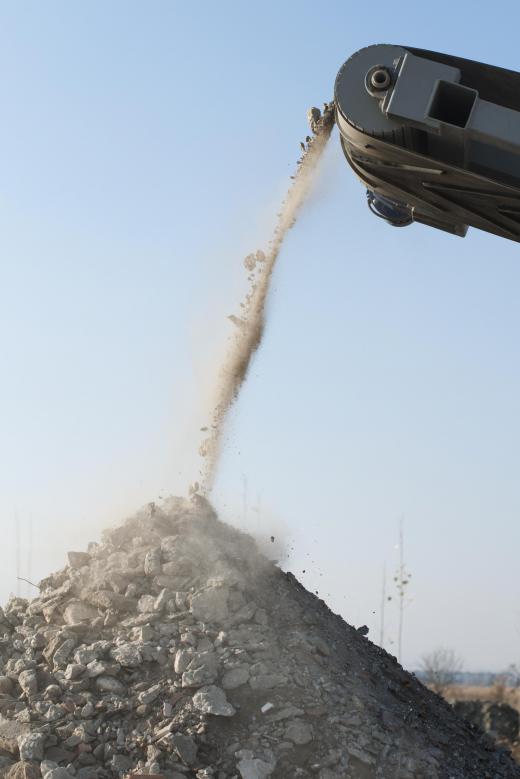Pulverizer machines are used to smash materials into tiny shards or granules. They can crush all types of items, including glass, aluminum, concrete, plastic, coal, rock, resin, tires, and medical waste. These machines come in a number of different forms. Hammer mills, ring mills, double roll crushers, granulators, wood hogs, impactors, and shredders are all different types.
A hammer mill pulverizer can be used to crush minerals, glass, chemicals, cement, metals, and paper. It contains a deep bin with a large hydraulic steel plunger on top of the machine. The steel plunger drops with incredible force, demolishing any contents placed below in the bin. One form is commonly used to crush cars.

A ring mill pulverizer can help reduce aluminum, minerals, coal, and recyclables. It has a large, steel rolling blade that chops and grinds any item placed into the roller. Once the items have been ground up, they drop into small holes under the rolling blade.
A double roll crusher pulverizer reduces many rocks and minerals. This type contains a bin in the middle of the machine, which sits between two large rollers. The rollers grind items that are fed into the bin. As the items are ground to pieces, they are pushed out of the machine.

A granulator pulverizer takes care of wire, plastic, and rubber. Similar to a shredder, a granulator uses thousands of evenly spaced blades to finely mince material placed into the machinery. Once the material is minced, it can be melted down and reformed into new product.
A wood hog pulverizer grinds down wood and bark. Using high-speed blades, a wood hog grinds wood into tiny chips. The wood can then be used for mulch, burned, or broken down further and turned into paper.
An impactor can be used to break down concrete, gypsum, asphalt, and aluminum. Using a heavy metal drop-down arm, it repeatedly smashes the material inside and fractures the object at points of weakness. In the end, the crushed material takes on a square appearance and can be formed into easy-to-remove cube blocks of waste. An impactor pulverizer is commonly used on wet materials due to the machine’s ability to handle moisture.
A shredder pulverizer takes care of metal, tires, plastic, medical waste, and paper. It uses evenly spaced blades to cut material into strips. Some contain both vertically and horizontally spaced blades, which leave the processed material looking much like a form of confetti.
